Tongnan Cultural Relics Map: The Thousand Buddha Temple Stone Carvings Excavated from Road Construction are National Key Cultural Relics but are Free to Open
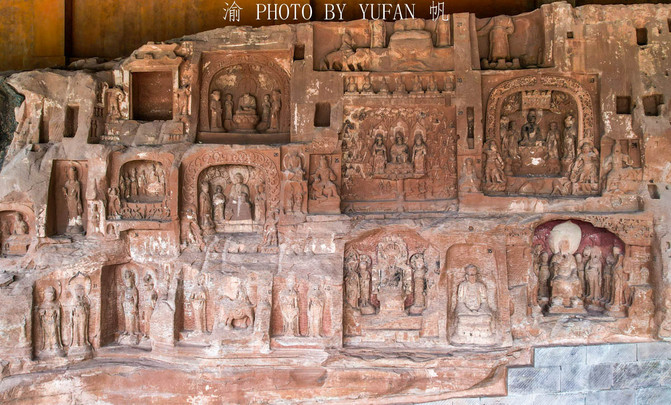
In August 2011, which was the hottest time of the year, villagers in Zhangjiawan, Xuejia Village, Chongkan Town, Tongnan District, Chongqing, were working hard to build a village to village road when the weather was slightly cooler in the morning and evening. This is a typical hilly terrain, and road construction is not easy, especially for this type of village road. It does not involve digging tunnels in the mountains or crossing the river like a highway. Instead, it can only be appropriately excavated and filled along some gentle slopes. Filling low-lying areas is easier than digging mountains, so a large amount of soil is needed. So they found a relatively soft and treeless gentle slope for soil extraction.
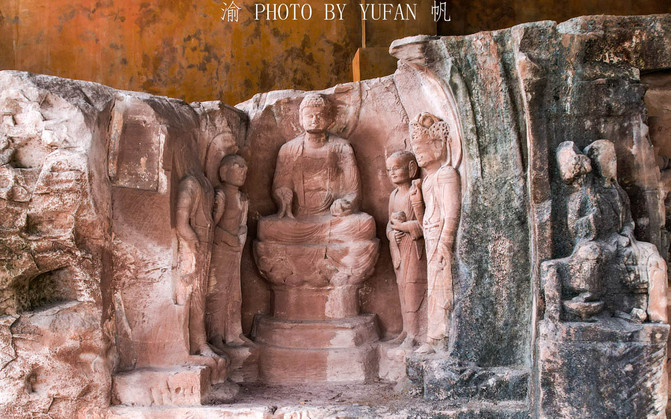
I don't know who called out, 'Hey, come take a look, there seems to be something good down here.' So everyone ran over together, wanting to see what treasure they had dug up. Upon closer inspection, they saw a delicately carved face on the cliff. They carefully used hoes to remove the soil above, and the long buried stone carvings gradually emerged.
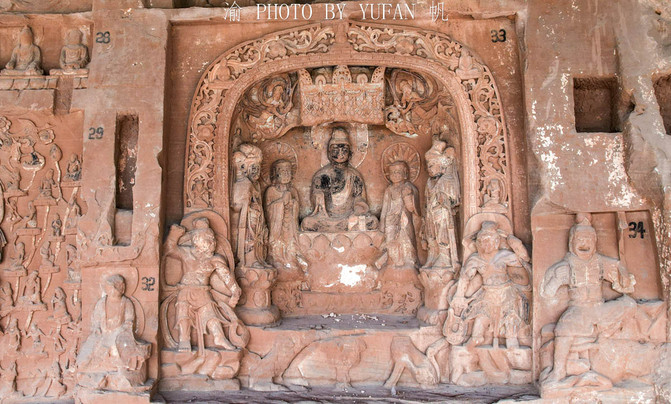
Seeing these stone carvings, everyone was very surprised. Although they couldn't tell the age of these carvings, they were buried deep in the soil and had a long history. Therefore, the news of the discovery of the stone carvings was reported step by step. Subsequently, the local cultural management department carried out salvage archaeological work, and the Qianfo Temple was able to recreate the sky.

Why is it called Qianfo Temple? The locals gave two reasons, one of which is that the area has always been called Qianfo Temple. Even when no stone carvings were found before, this area was still called Qianfo Temple. After this stone carving was discovered, it was naturally called Qianfo Temple Stone Carving.
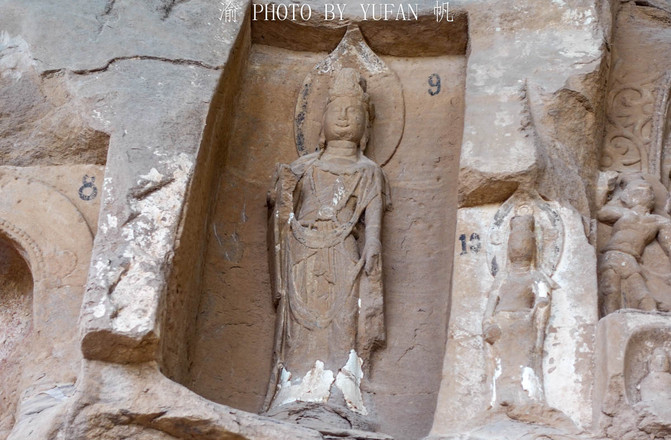
Another theory is that there are many, many stone carvings in this area, and only a small part of them have been discovered. There are over a thousand cliff statues, so it is called the Thousand Buddha Temple.

According to Xu Lin, Deputy Director of the Tongnan District Cultural Management Office, the cliff carvings of Qianfo Temple run in an east-west direction, about 30 meters long and 4 meters high. Archaeological discoveries have revealed architectural relics from the Ming and Qing dynasties at the foot of the cliff, but they have long been destroyed and the layout is not very clear. At that time, a total of 43 niches of stone carvings were issued, containing 211 various statues and 31 written inscriptions.

The stone carvings on the cliffs of Qianfo Temple can be traced back to the mid Tang Dynasty, with the late Tang and Northern Song Dynasties being the main periods of sculpture. From the shape of the cave niches, the stone carvings here are mainly rectangular niches, as well as outer and inner circular arch niches, curved niches, and roof shaped niches, which can be divided into two categories: double niches and single niches. Double niches often have lintel decorations, such as honeysuckle patterns, rolled grass patterns, bead patterns, flame patterns, sitting Buddha patterns, etc., which look very exquisite.
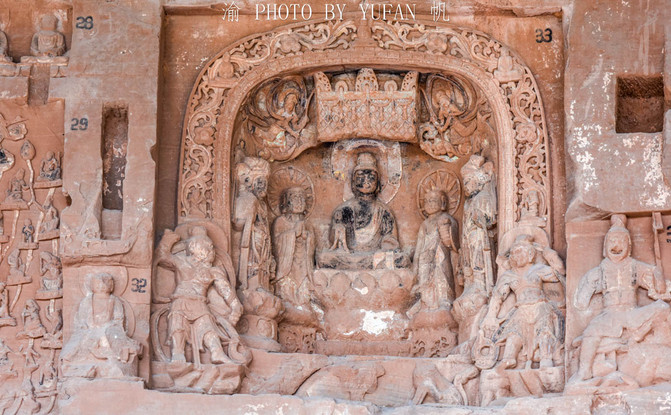
From the perspective of theme, the stone carvings in the Thousand Buddha Temple are very rich, including Maitreya, Sakyamuni, Amitabha, Avalokitesvara, Manjusri, Samantabhadra, Western Three Saints, Tibetan Bodhisattva, Heavenly King, Flying Sky, Jiyue, Bodhi Twin Trees, Human Shaped Dragon Babu, Sixteen Arhat, etc. There are various forms of combinations, including one Buddha and two Bodhisattvas, one Buddha and two disciples and two Bodhisattvas (as shown in the picture), one Buddha and two disciples and two Bodhisattvas, two strongmen, one Buddha and four disciples and four Bodhisattvas, one Buddha and eight Bodhisattvas, etc.

The third niche is one Buddha, two disciples and two Bodhisattvas. These five statues are located in the center of the rectangular niche. Eight Arhat are carved on the left and right sides, which are distributed in two layers. A dragon is carved below the back of the niche wall. The main Buddha in the middle has a pointed peach shaped head (with a damaged head), wearing a double collared hanging kasaya, and sitting on a lotus platform with a waist cinched and tilted back. The disciples on both sides stand in statues, wearing double collars and hanging robes, with their hands clasped together. The standing statue of the Bodhisattva has a severed head, with a jade pendant hanging over the shoulders and a monk's branch inside. The shoulders are covered in a heavenly robe, and a long skirt is worn underneath. The arm is wrapped in silk, and it stands on a lotus shaped circular platform.

The two sides of the main Buddha are sixteen Arhat, whose heads are basically mutilated, and the specific reason is unknown. The neck and legs can be seen to be repaired by later generations, wearing cassocks, and sitting on the other side of the body. It can also be seen that sitting on the other side of the body is easy and sitting on the other side of the body is good. There are inscriptions under the throne of the Lord and Arhat, of which 14 can be identified, all of which are engraved in intaglio.
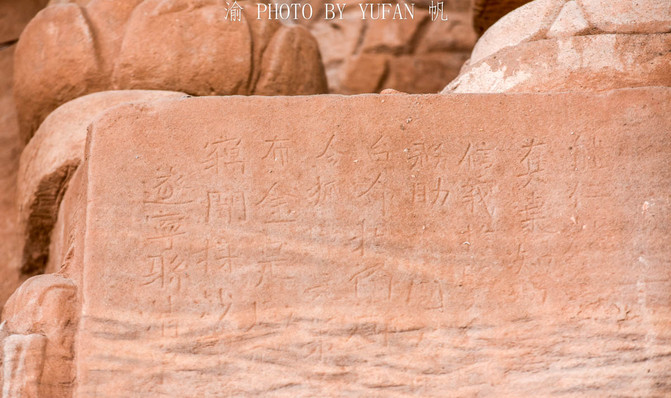
Below the statue in the middle, there is a large area of inscriptions, with faintly recognizable words such as "Qingquan of Suining County... brothers of Linghu Zhang... fourth year of Kaibao... Yan Xiu". The rest of the inscriptions are weathered and difficult to recognize. There are also inscriptions under the statues of Arhat on both sides, which can be vaguely identified as: "The first one was made by Linghu Zhang's husband with his heart", "The second one was made by Linghu Zhang", etc. From these inscriptions, it can be inferred that they were donated by the Linghu family around the fourth year of Kaibao (972 AD, with a history of 1049 years). The inscriptions repeatedly mention the names of Linghu Zhang, Linghu Qing, and other family members, which are important materials for studying the history of the Linghu family in the early Northern Song Dynasty.
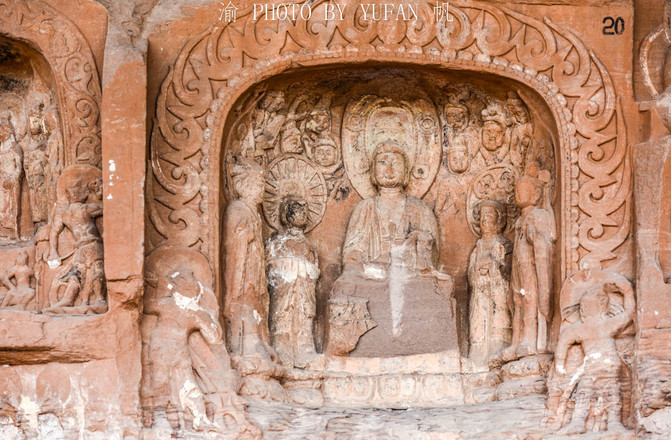
The outer surface of the 20th niche is square, but the middle is circular, belonging to a double niche. The lintel of the niche has exquisite patterns such as pearls, petals, precious beads, and honeysuckle. In the middle of the stone niche is a statue of one Buddha, two disciples, two Bodhisattvas, two strongmen, and eight heavenly dragons. According to Deputy Director Xu Lin, this niche is named the Shakyamuni Buddha Sutra.
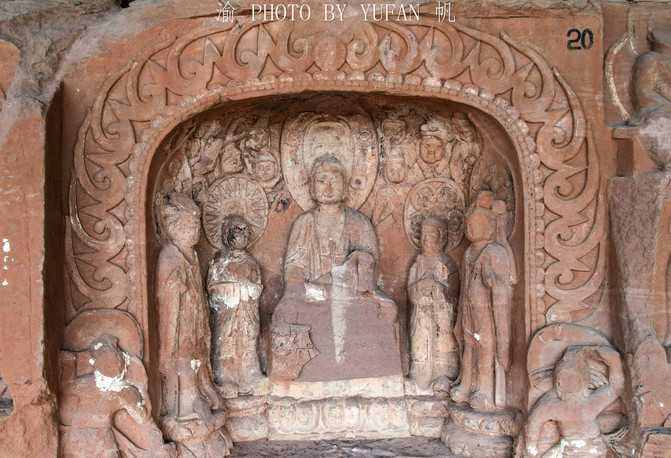
The head of the main Buddha statue in the middle is a pointed peach shaped bald head, with a round face and a monk's branch inside. The outer part is covered with a monk's robe, sitting in a knot. On the left and right sides are standing statues of disciples, wearing long robes, round bald heads, and cloud shoes; The Bodhisattva statue is adorned with a crown on its head, a pearl patterned collar on its neck, and is draped in silk and adorned with a tassel. It is also dressed in a cross collared coat and a long robe, standing on a lotus platform.
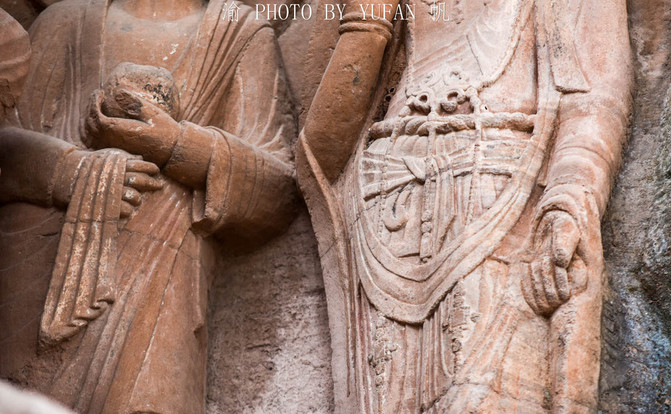
Outside the Bodhisattva statue, there is a statue of a strongman with a round head light. He is dressed in a battle dress, tied with a waist belt, and a fluttering silk belt behind him. He twists his waist and lifts his hips, standing barefoot on a mountain shaped platform. The upper part of the niche wall is carved with eight human figures of a heavenly dragon, with four bodies on the left and five bodies on the right. In the niches, there are the images of human shaped Tianlong Babu, which are more common in the grottoes in Sichuan and Chongqing. Both Dazu Rock Carvings and Anyue Stone Carvings are said to have esoteric factors.
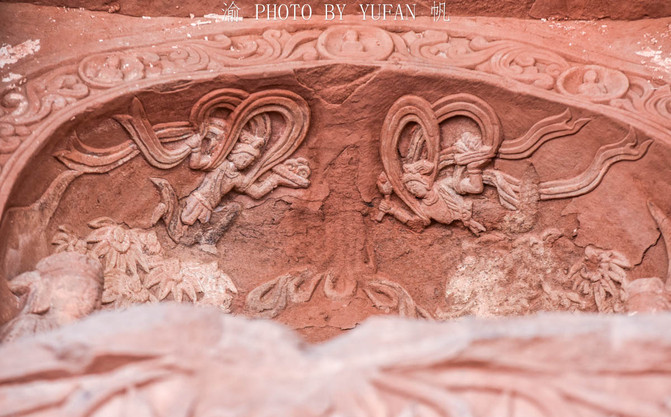
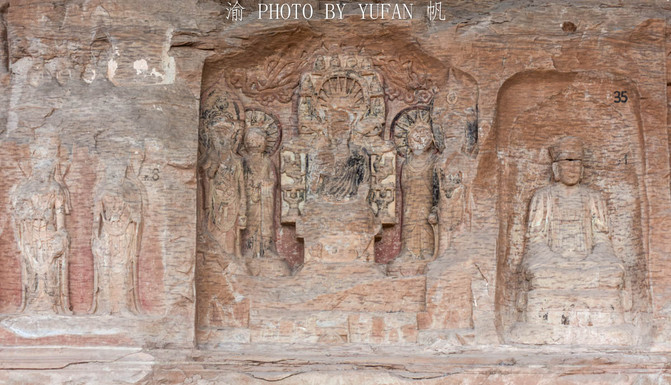
The thirtieth niche is a statue of one Buddha, two disciples, and two bodhisattvas, which is a vertical rectangular circular arch shaped niche with a flying celestial statue carved on top. Its exquisite level is comparable to that of the Mogao Caves in Dunhuang. The Buddha statue in the middle is Maitreya Buddha, with a damaged head and a lotus flower crown above. He is wearing a robe, with his right hand tilted in front of his chest and sitting on a diamond throne with a knot. The disciple on the right holds a prayer bead in his left hand and places it horizontally on his chest, standing on a double layered lotus covered platform. The disciple on the left is wearing a robe and has his hands arched over his chest. The Bodhi statue at the top is a common material in the cliff sculptures of Qianfo Temple.
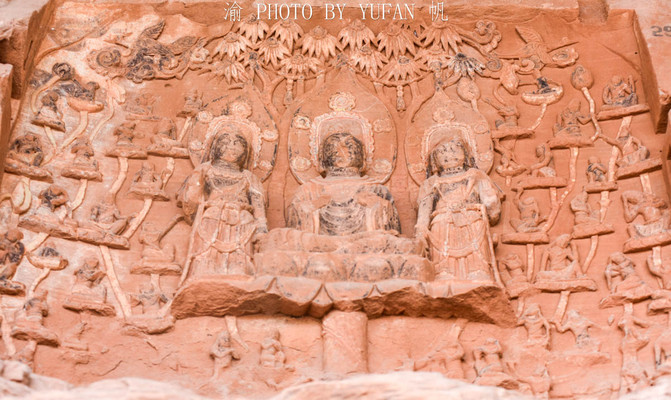
The 29th niche is the Fifty Bodhisattvas of Amitabha Buddha, with the main statue in the middle being the Western Three Saints. The top is carved with Bodhi twin trees and flying birds, while the left and right sides of the Western Three Saints are carved with fifty statues of Bodhisattvas and young children. Between these statues are lotus leaves, stems, and canopies. The main statue is Amitabha Buddha, with spiral hair, square face, wearing a shoulder length robe, and sitting on a lotus platform with high stems and upturned shoulders.
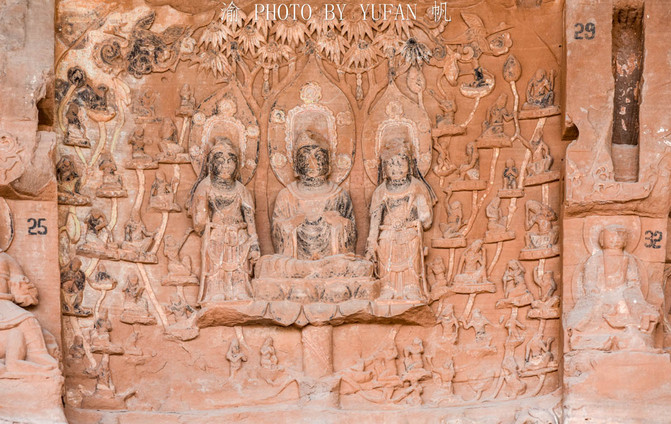
On the left side, there is a statue of Guanyin, while on the right side, there is a Bodhisattva standing tall with a majestic posture. She is wearing a crown, cloud shoulders, and draped in a necklace. She is also wearing silk and a long skirt, standing barefoot on a lotus covered platform. The bodhisattvas on both sides have seven layers, either kneeling or holding their knees, with different postures, and the children are all naked. According to the "Collection of Reflections on the Three Treasures of China" by Daoxuan of the early Tang Dynasty, "The fifty statues of Amitabha Buddha are the auspicious statues of India in the Western Regions.

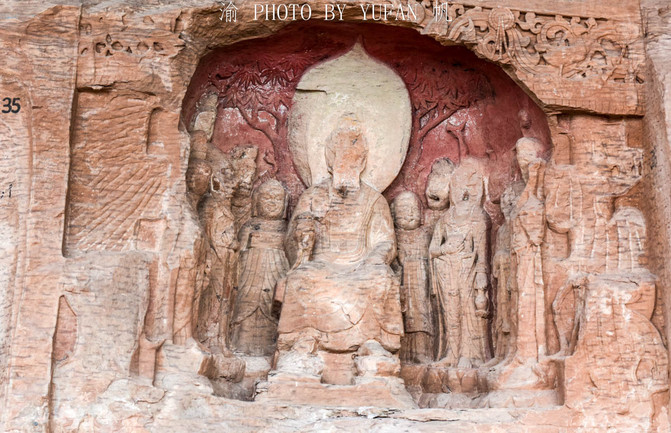
The stone carvings of Qianfo Temple are ancient and exquisitely carved, with high cultural value. The reason why they can be preserved relatively well is closely related to their burial. It is said that in the 1950s, after the liberation, many places began to develop water conservancy projects, and the area where Qianfo Temple is located became a quarry due to the construction of Chongkan Reservoir. From time to time, the buildings on the stone carvings no longer exist, and these stone carvings are also buried by the gravel and earth and stone left by the quarry, which has helped them avoid later damage. After the 1960s, they were given special protection when they were rediscovered.
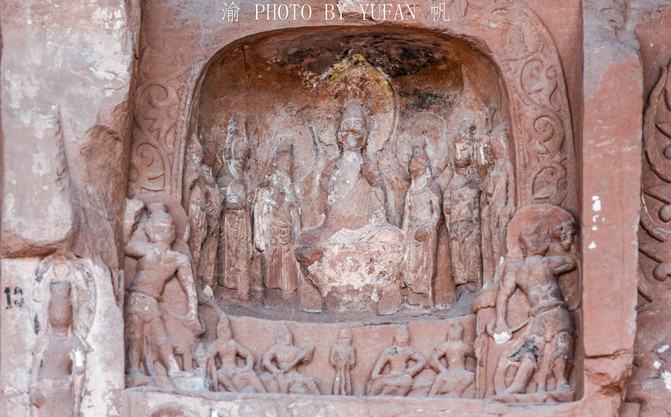
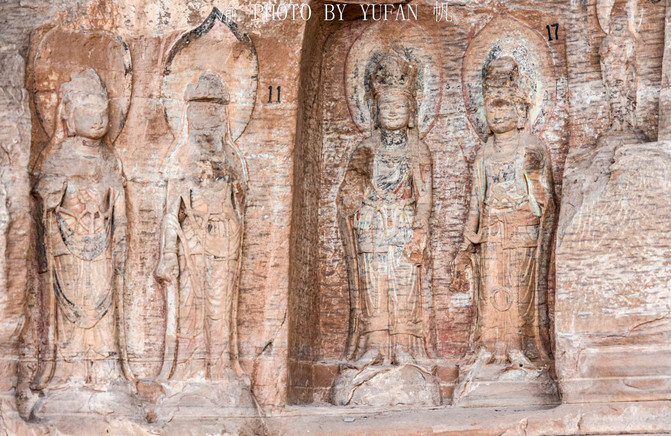
The stone carvings of Qianfo Temple have been opened to the public, but there are still many mysteries to be solved, such as what kind of family the Linghu family mentioned in many parts of the Buddha statue is and why they donated funds to build Buddhist niches here? Moreover, whether it is Chongkan Town where Qianfo Temple is located or Tongnan District, the presence of the Linghu family has not been found in the stone carvings of other places. Even in Tongnan area, there are no citizens with the surname Linghu living here. Where have they moved to?

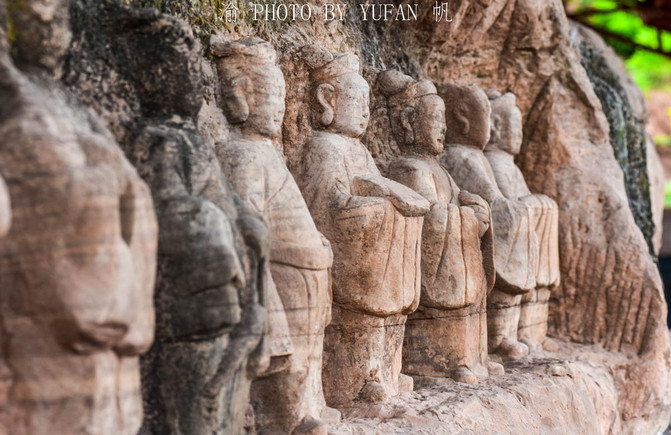
Another mystery is where the Qianfo Temple is located? If it had always existed, how could these statues have been buried in the soil in the 1950s? Regarding this issue, some people say that it was burned down by the White Lotus City in the late Qing Dynasty, while others say that no one among the ancestors knew about it, and it has never even appeared in Chongqing's literature. Is it really like Chongqing's Shangqing Temple, which only has a name but no temple?
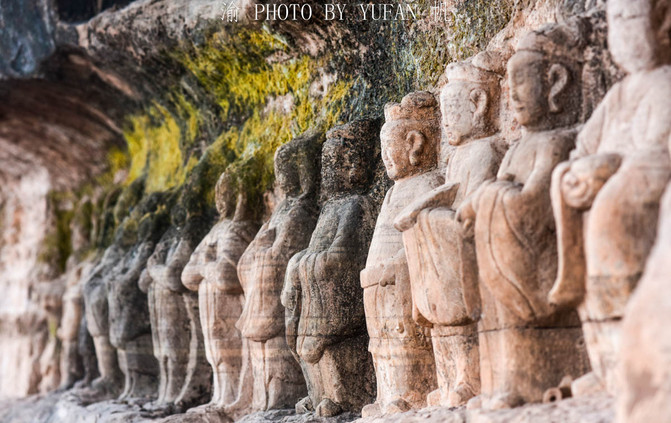
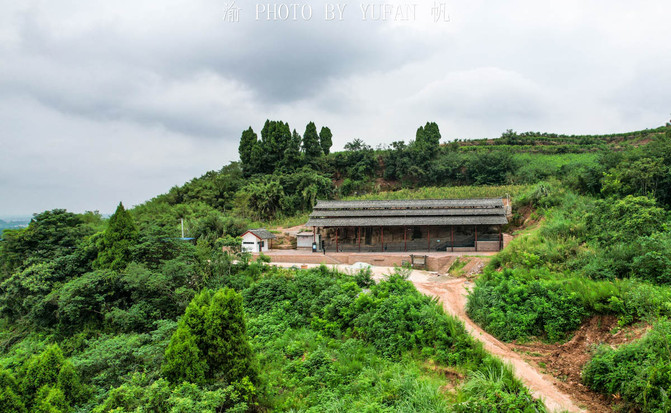
Since its discovery, the cliff statues of Qianfo Temple have received high attention from the cultural management departments at both the Tongnan and Chongqing levels. Especially in Tongnan District, the cultural management department has done a lot of work, not only covering the stone carvings with a roof to shield them from wind and rain, but also building a protective barrier, upper and lower drainage systems, hardening the road, and arranging specialized management personnel to ensure the safety of cultural relics.
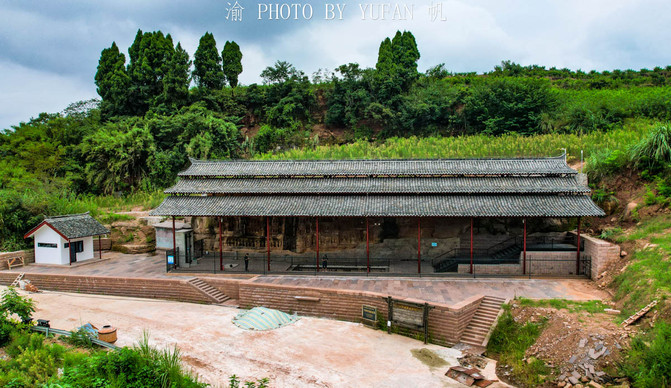
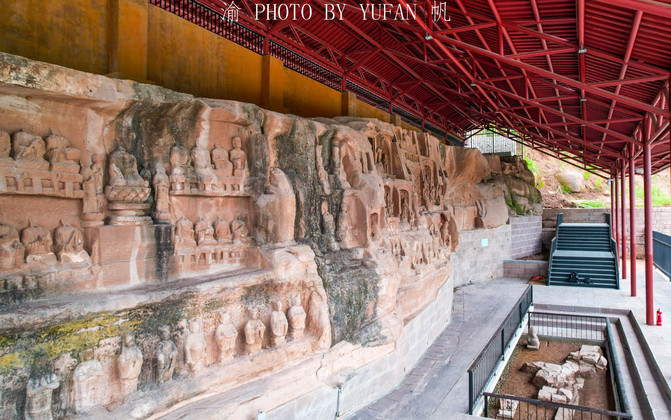
The discovery of the cliff carvings at Qianfo Temple has added new important physical materials to the stone carvings in the Sichuan Chongqing region, providing important basis for the study of religious dissemination and stone carving art in eastern Sichuan since the Tang Dynasty. It has high historical and archaeological value and was listed as a national key cultural relic protection unit on March 5, 2013.
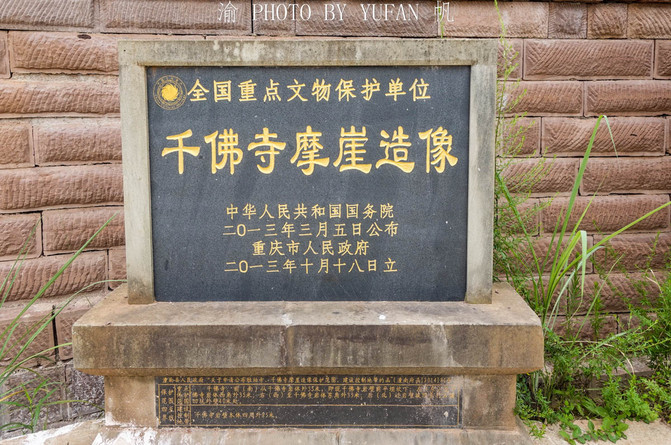
The Thousand Buddha Cliff Carvings are not only a national key cultural relic protection unit, but also free to visit without admission tickets. However, there are basically no tourists, and many times, there are no tourists for several days. It can be said that they are kept in a secluded place without recognition. If you have the opportunity, you can really come here to see, and you will definitely be impressed by the exquisite carving art of ancient people.

This is the Qianfo Temple Cliff Carvings located in Chongkan Town, Tongnan District, Chongqing, a little-known national treasure level cultural relic scenic spot. Follow me, I will introduce more cultural relics and treasures hidden in the folk to everyone, and welcome everyone to provide clues worth sharing. Let's explore together.
Next Article:Time travel | Touching century old art and time
